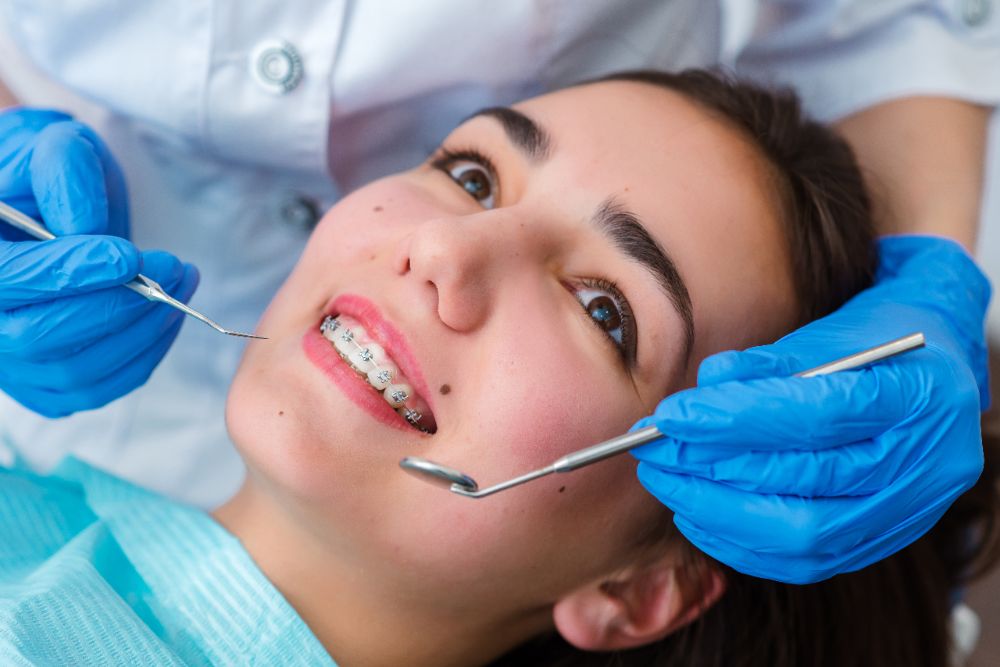Comprehensive Guide to Orthodontics Treatments for Fixing Dental Misalignments
Comprehending the intricacies of each procedure, including their devices, advantages, and prospective disadvantages, is important in making notified decisions concerning one's orthodontic therapy. As we browse through the comprehensive guide to orthodontic procedures for fixing oral imbalances, the complex details of each approach will certainly unravel, dropping light on the path towards a practical and unified oral positioning.
Orthodontic Procedures Summary

Routine modifications and monitoring are vital components of orthodontic therapy to make sure progression is on track and to make any essential adjustments along the method. By going through orthodontic procedures, patients can not only accomplish a straighter grin but likewise boost their overall oral wellness and feature.
Conventional Braces: Just How They Work
When taking into consideration orthodontic therapies for dental imbalances, standard dental braces attract attention as a time-tested approach for correcting teeth placing. Traditional dental braces contain brackets, cables, and bands that interact to use continual stress on the teeth, slowly relocating them into the wanted alignment. The braces are connected to the teeth making use of a special adhesive, and the cables are threaded through the brackets. By readjusting the tension of the cables, orthodontists can regulate the instructions and force related to each tooth, directing them into appropriate placement gradually.
One secret element of how conventional dental braces work is the procedure of bone remodeling. As stress is used to the teeth via the braces, the bone surrounding the teeth is improved to support the new tooth settings. This renovation is essential for the lasting security of the corrected placement. Clients will certainly require routine changes at the orthodontist's workplace to guarantee the braces proceed to apply the proper pressure for reliable teeth activity.
Unnoticeable Aligners: Benefits And Drawbacks
Unnoticeable aligners supply a hassle-free and very discreet choice to traditional dental braces for remedying dental imbalances. These clear, custom-made trays are essentially undetectable when put on, making them an attractive alternative for people looking for a more visually pleasing orthodontic treatment. One of the main benefits of invisible aligners is their removability, permitting for easier upkeep of dental health compared to traditional dental braces. People can eliminate the aligners prior to eating or cleaning their teeth, decreasing the risk of food obtaining stuck in the device and simplifying the cleansing process.

Surgical Orthodontic Options
Surgical treatments in orthodontics existing practical options for attending to complex oral imbalances that may not be efficiently settled via traditional orthodontic therapies. While traditional dental braces and undetectable aligners can correct lots of orthodontic problems, certain instances require surgical treatment to attain optimum results. Surgical orthodontic choices are normally recommended for extreme malocclusions, significant jaw inconsistencies, and situations where the underlying bone structure needs adjustment to accomplish appropriate placement.
One common surgical orthodontic treatment is orthognathic surgical procedure, which includes rearranging the jaws to fix useful concerns such as trouble speaking or eating. This my blog surgical procedure is frequently carried out in collaboration with an orthodontist that assists line up the teeth before and after the procedure. Surgical orthodontics might likewise entail treatments to reveal affected teeth, remove excess gum cells, or reshape the jawbone to produce an extra harmonious facial account.
Prior to considering surgical orthodontic choices, individuals undergo a detailed analysis to figure out the site link necessity and prospective advantages of such treatments. invisalign. While surgical treatment might seem complicated, it can dramatically improve both the feature and visual appeals of the smile in instances where standard orthodontic treatments fail
Retainers and Post-Treatment Treatment

Failure to conform with post-treatment treatment guidelines can result in regression, where the teeth slowly move back towards their initial settings. Regular retainer wear, good dental hygiene, and normal oral check-ups are important for maintaining the results accomplished through orthodontic surgery and guaranteeing the long-term security of the dealt with dental positioning.
Verdict
In final thought, orthodontic procedures supply different options for fixing dental imbalances. Surgical orthodontic alternatives are available for a lot more severe imbalances. Overall, orthodontic procedures can properly improve oral health and wellness and aesthetic look.
As we navigate with the extensive guide to orthodontic procedures for fixing dental imbalances, the complex details of each approach will certainly unfold, losing light on the course toward a useful and harmonious dental placement. - cumming braces
One of the most common orthodontic treatments is the usage of braces, which are composed of steel braces and cords that apply mild pressure to progressively change teeth right into the wanted setting.When thinking about orthodontic treatments for dental imbalances, standard braces stand out as a time-tested technique for fixing teeth placing. Additionally, unseen aligners may not be ideal for intricate orthodontic concerns that require more significant teeth motion, as they are generally advised for mild to modest situations. Retainers are tailor-made orthodontic gadgets created to hold teeth in their corrected settings after the conclusion of orthodontic therapy.